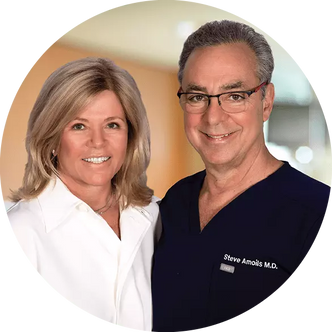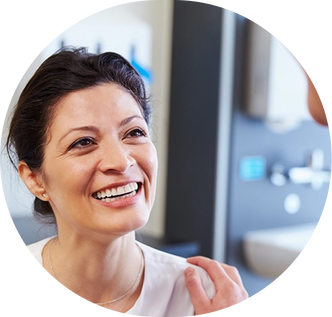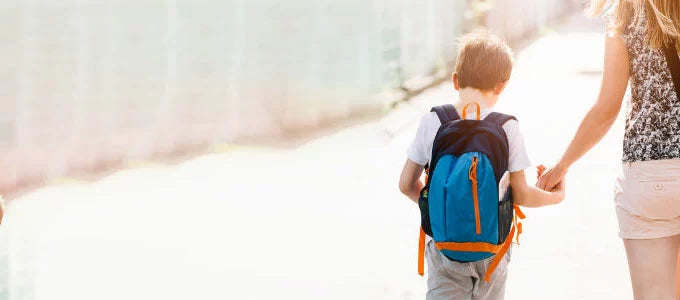According to a 2014 study found in the Journal of the American Academy of Child & Adolescent Psychiatry, 11% of children between the ages of 4-17 years old have been diagnosed at some point with Attention Deficit Hyperactivity Disorder (ADHD) and 6.1% of them were being treated with medication. Of those children between the ages of 2-5 years old, approximately 237,000 have received this diagnosis with 44% of them receiving a medication. The study found that the number of children being diagnosed with this disorder has been steadily increasing since 2003. (To see the CDC’s summary of these statistics, please click here.)
With school starting again shortly, we decided to sit down with our own Dr. Teresa Esterle, who has been practicing for 17 years as a Board-certified Pediatrician before joining AIM, to discuss this disorder. Our interview with her is below:
AIM: Thank you for sitting down with us today.
Dr. Teresa: My pleasure.
AIM: When talking about ADHD, how is working at AIM different than working at your previous practice?
Dr. Teresa: I have many more tools at my disposal to help individualize the treatment and address the different problems associated with this concern. I am better able to treat the individual child.
AIM: What did you mean by, “Different problems associated with this concern?”
Dr. Teresa: Many children get diagnosed with this behavioral disorder that don’t have it. Lots of schools and doctors are too quick to label kids with ADHD, but the symptoms you see associated with this diagnosis could be the result of sleep apnea or other sleep difficulties, a learning or processing disorder, like dyslexia, or even simply anxiety or depression.
AIM: You mentioned having different tools. What are the different tools you have here?
Dr. Teresa: First and foremost, a team of people I trust. A team of people who all appreciate that every person is different and can recognize when a therapy they are providing will or will not support the best interest of the patient. And our team is massive! Sometimes you need a psychologist on board to really assess the diagnosis, and Richard (referring to Richard Sears, Psy.D., MBA, ABPP) is great. We have a new dietician (referring to Katherine Mattox, RDN) who is fantastic at helping families create realistic dietary changes. We have amazing an amazing Rolfer™ and craniosacral therapists. They are all right here, so I don’t have to refer out, which makes it convenient for my patients.
On top of that, this team offers so many different treatment options. Every child is different and medicine in not always the best answer for every child.
AIM: If a child is found to have true ADHD, what would you recommend to a parent who is unable to get in to see you right away?
Dr. Teresa: Read Fire Child, Water Child (referring to Fire Child, Water Child: How Understanding the Five Types of ADHD Can Help You Improve Your Child’s Self-Esteem and Attention by Stephen Scott Cowan). I recommend it to all my parents who are concern about this diagnosis with their child. I love it so much that we sell it in our store. That way parents can grab it before they leave the office. Knowing your child’s personality and what keeps them from paying attention in the classroom, their strengths and weakness, will help you to support them in what they already do well.
Eat breakfast! Too many kids are skipping meals, especially this one. I often give the analogy to kids about how a car wouldn’t be able to move if you don’t fill it with gas. How do you expect a brain to work on nothing? I then turn to parents and discuss the difference between the grades of gasoline. By all means, you CAN fill your car with diesel fuel, but to run well you car needs 89-octane gasoline. The gas tank may be full, but your car is going to breakdown. The same thing goes with food. Pop-Tarts and sugary cereal do not count as a good breakfast. You need a healthy breakfast with protein. This is where our new dietitian is incredibly helpful for my patients.
Aside from these things, a quick and generalize check list for parents would be:
- Make sure you have the right diagnosis.
- Remove from the diet dairy, gluten, food colorings and food flavorings. Many people, especially children, are sensitive to these foods and additives. Shopping at places that work hard to minimize products with food colorings, like ALDI, Trader Joe’s and Whole Foods, makes this job easier.
- Minimize exposure to toxins not only within foods, but also within beauty care products. Watch for colorings in toothpastes, lotions, and shampoos. I refer many of my patients to the Environmental Working Group’s website to help them find clean products… or I send them over to our store because we already carry so many.
- Improve your child’s activity levels. Kids need an outlet for their energy. If they are not into sports, consider yoga or martial arts.
- Train the brain to focus with meditation and mindfulness. Yes, kids can do it. I have many books on how to teach meditation, yoga, and belly breathing to little kids.
- Create routines/structure within the home that they child can count on.
There needs to be electronic curfews and healthy bedtime routines. Most kids need between 8-10 hours of sleep/night. If they’re tired, they can’t pay attention at school.
AIM: What about nutritional supplements? Have you found these to be helpful?
Dr. Teresa: I think most kids need 1 gram of omega 3’s (fish oil) each day. Aside from that, I like to test patients before I give recommendations. I usually test kids who have been diagnosed with ADHD for iron, zinc and magnesium levels, but my favorite test to run is the ONE. It’s a urine collection, so no blood draw needed, that shows the antioxidant, B vitamin and mineral levels. It’s a great test.
AIM: What wonderful tips! Thank you so much for talking with us today.
Dr. Teresa: Anytime.




